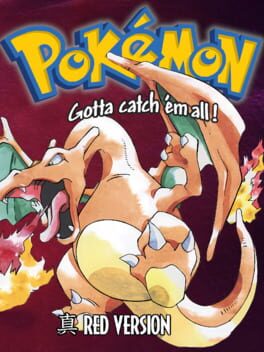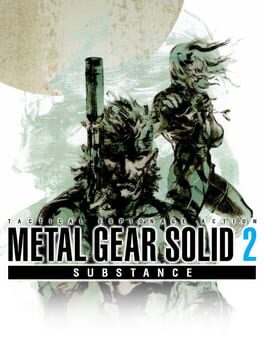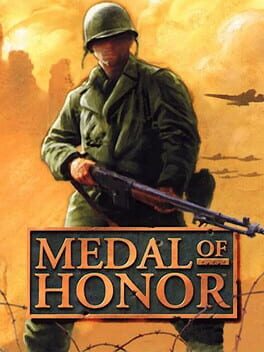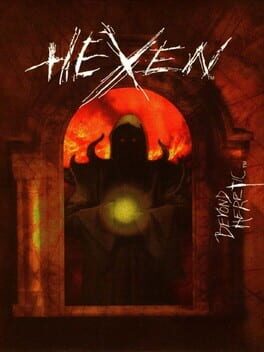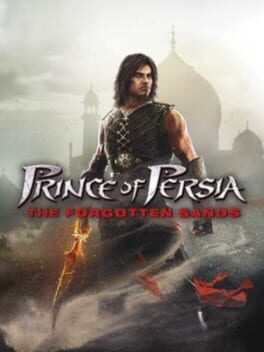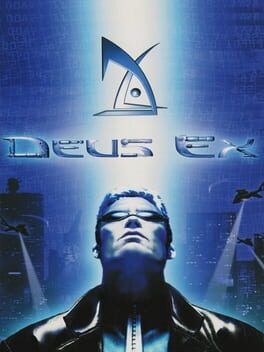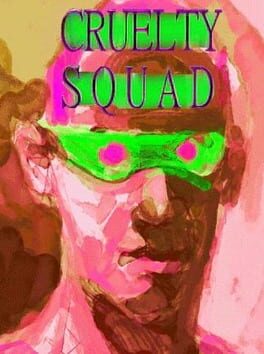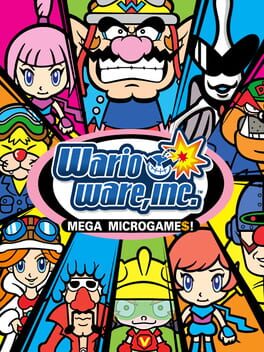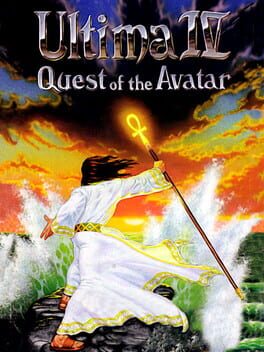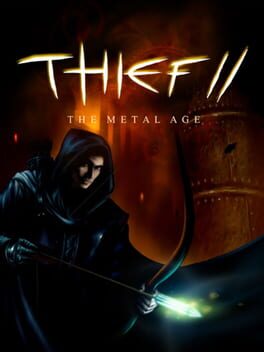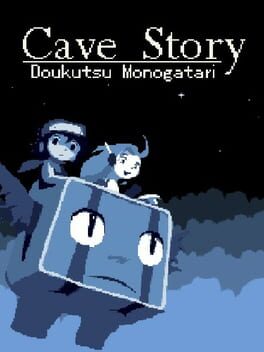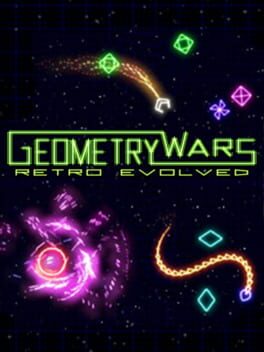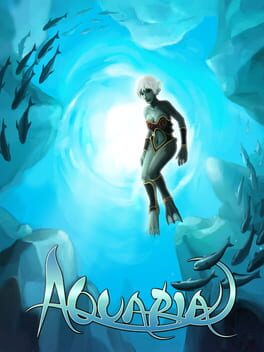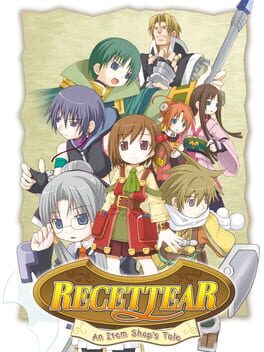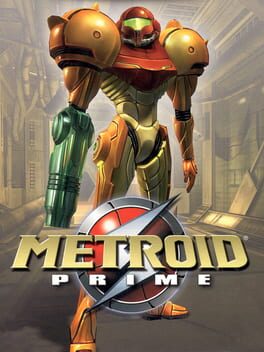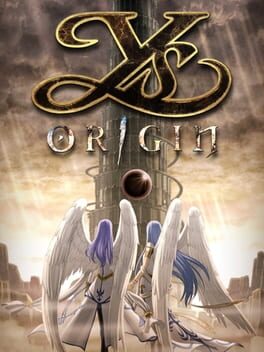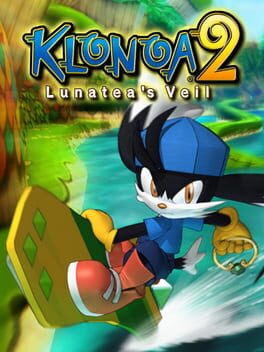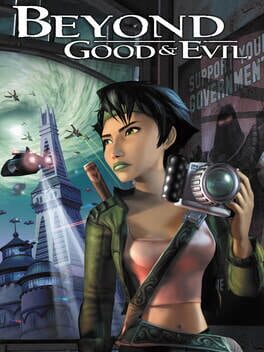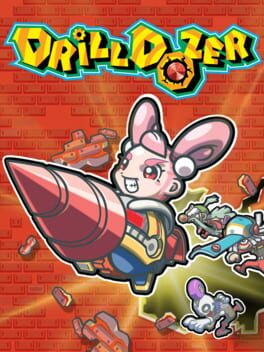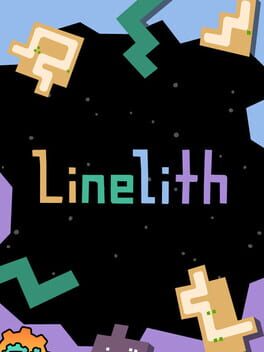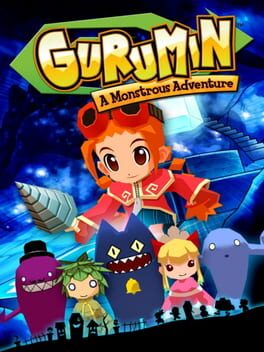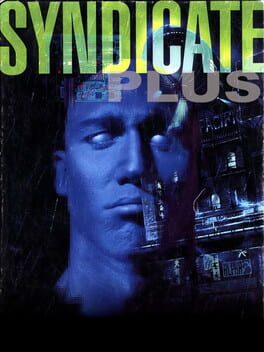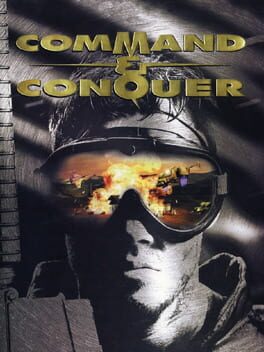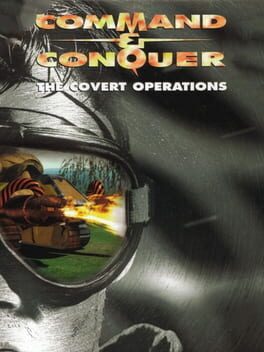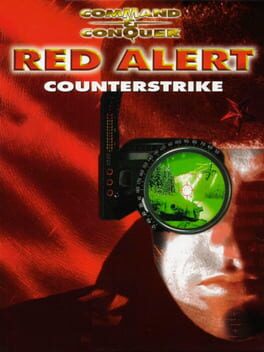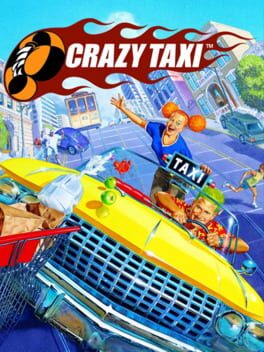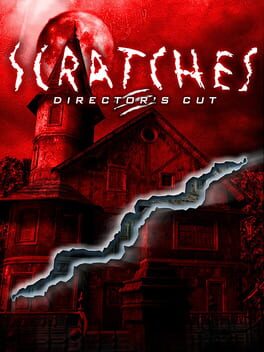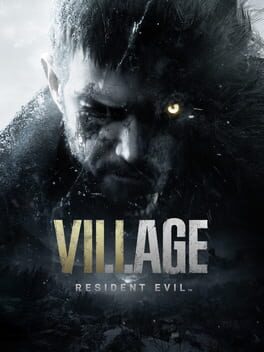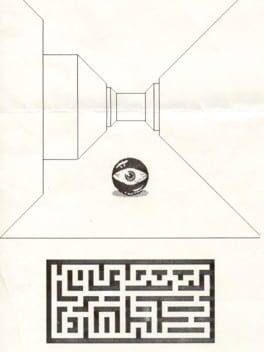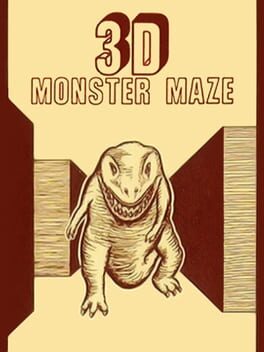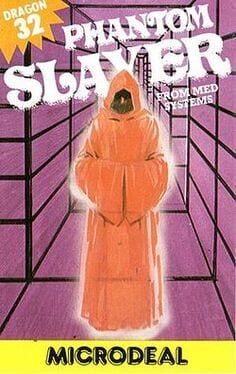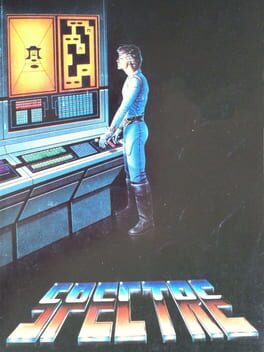Dief88
940 reviews liked by Dief88
Confession: I didn't actually buy the Advance Collection for a history trip with the Castlevania series. Instead, I just wanted an excuse to play Aria of Sorrow again, with some other games as a bonus. Aria was my first contact with the Castlevania series, something that was both a blessing and a curse, because from then on, playing other Castlevanias always gave a feeling of "this is not quite it". Of course, in revisiting an old favorite, there's always the risk of one's memory not holding up and just not remembering the game's flaws.
One thing I definitely didn't remember was that the protagonist, Soma Cruz, is actually an eighteen year-old high-schooler, to which my immediate reaction was "no he's not". Just look at his portrait, beautifully rendered by Ayami Kojima. That piercing gaze? Shining white hair? That black turtleneck with the sleek fur-lined coat? This man is the definition of too cool for school. If he's a high schooler, he probably takes love letters out of his locker on a wheelbarrow. And he ignores them all, because that's how cool he is.
Erm-ahem. Fan fiction aside, the game takes place in Japan in the year of 2035. A solar eclipse is happening on that day, and Soma is headed to Hakuba Shrine to meet his childhood friend Mina and watch the event from there. Upon arriving at the shrine, however, Soma loses consciousness, and the two are transported to a mysterious castle, where they meet the enigmatic Genya Arikado. At first, he doesn't know what to do about the two teenagers, but as the trio are jumped by monsters, something unexpected happens: Soma absorbs the essence of a monster he defeats, obtaining its power. Having witnessed this, Arikado then ushers Soma to reach the top of the castle so the group can escape from it.
Aria was the last Castlevania game made for the Game Boy Advance, and it shows. The mastery over the limited hardware and small screen is displayed in some of the most beautiful spritework on the system. Soma himself is a shining example: the fluidity of his walk cycle, the turning of his body as he puts his strength into a swing, the way his coat gently sways with the wind... the amount of detail crammed into this not even 40 pixels tall character is impressive.
One might say that putting a lot of work into the main character is standard, as that will be the focus of the player's attention most of the time. The idea with such an approach would be to put a lot of work in the main character, and then not push enemies and other characters too far. Which is fine, except that no sprite artist at Konami got that memo, because they flexed all over the place. Enemies look positively gorgeous in Aria, from the first disgustingly goopy zombie met in the Eternal Corridor all the way to Dracula's final form, all of them are carefully designed, colored, shaded and animated.
To say nothing of the environments, which are a further step up from Harmony of Dissonance and look especially smooth. Parallax and Mode 7-like effects are a given by this point, but Aria takes it further by incorporating animated tilesets for lighting effects. The save room in this game is the most beautiful in the series, with the flickering of the flame on display through the walls and the statue in the center.
And the sound design? There are a surprising amount of voice clips for a GBA game, and enemies make all sorts of noises that give them more personality -- I especially like the intense death screams. It should also be said that the game's original soundtrack is one banger after another. Konami is really bad at this memo thing, because the composer also didn't get the one that said "these are the first and second areas of the game, no need to go all out". To say nothing of the moments where it actually made sense go hard, which... Incredible stuff.
Everything in Aria feels just right, like after a couple of games of trying to iterate on Symphony of the Night, something just clicked. The castle is a perfect mix of maze and proper castle, with the areas that branch and connect unpredictably, but without losing the feeling of distinct zones, which happened in HoD to some extent. Aria even went back to having transition rooms like SotN did, which despite being technically unnecessary in a GBA game, feel extremely natural from a design standpoint, creating some breathing room between areas that emphasize the difference between them.
In addition, the game maintains a consistent level of challenge from beginning to end, with enemies and bosses that are varied and engaging. Plus, with Soma not being a vampire hunter, the player is not locked into a whip for the entirety of the game, and he instead gets access to an arsenal of swords, lances, axes and blunt weapons. The choice between them is not simply about aesthetics: each individual weapon has a different range and hitbox shape, as well as distinct swing and recovery times. It's often advantageous to swap between weapon types for specific encounters, which speaks to how well designed equipment is.
Aria's greatest asset, however, is the Soul System and its monster abilities, through which you-- yes, you -- can now be the little asshat throwing bones from higher ground, living the ultimate Castlevania power fantasy. As established in the opening segment, when defeating enemies, Soma might obtain a soul, which when equipped, enable either a passive, sustained or instant ability related in some way to that monster. Souls are both a means of progression, with key souls obtained in specific rooms allowing access to new areas of the castle, and for combat purposes, replacing the series' traditional subweapons.
At first, this might seem similar to the DSS in that abilities are obtained as random drops from monsters, but it's far superior. For one, there's a direct connection between the monster and what its dropped soul does, which gives the system more personality. Moreover, unlike cards, every monster has a soul. In the face of the low drop rate, while it's unlikely the player will obtain every soul as they travel through the castle (unless your name is TASBot), the law of averages results in them obtaining some set of souls that they can work with. The result is that every playthrough feels slightly different as the player works with a set of tools. Also, completionists have their work cut out for them, hunting exotic monsters with the aid of late game mechanics that boost drop rates.
Souls are also an important metanarrative element that lends credence to Soma's growth. Unlike Juste before him, Soma is a student with no formal combat training, and this is reflected on his initial abilities, which are restricted to jumping and a weak attack. As he explores deeper into the castle, however, he grows stronger and faster, becoming a real powerhouse by the end of the game, and souls make that growth over the course of the story, down to the completely artificial video game notion of levels, seem justified.
Incidentally, Aria of Sorrow features an outstanding central narrative. This is largely owed to its mysterious and layered characters who make frequent appearances throughout the castle, and also to the unusual circumstances surrounding Dracula's castle in the year of 2035 itself. Similarly to HoD, ol' Vlad is nowhere to be found, this time because Aria takes place in an age in which Dracula was permanently destroyed by the Belmonts, and the characters, from church officials to government agents to soldiers to our unlucky duo of teenagers, have different ideas on why the castle reappeared.
There's no feeling quite as refreshing as returning to a childhood classic and realizing it's just as outstanding as it was all those years ago. Aria of Sorrow is the result of years of iteration and passion, and stands amongst the best Castlevanias and the best metroidvanias ever made. It alone justifies buying the Advance Collection.
One thing I definitely didn't remember was that the protagonist, Soma Cruz, is actually an eighteen year-old high-schooler, to which my immediate reaction was "no he's not". Just look at his portrait, beautifully rendered by Ayami Kojima. That piercing gaze? Shining white hair? That black turtleneck with the sleek fur-lined coat? This man is the definition of too cool for school. If he's a high schooler, he probably takes love letters out of his locker on a wheelbarrow. And he ignores them all, because that's how cool he is.
Erm-ahem. Fan fiction aside, the game takes place in Japan in the year of 2035. A solar eclipse is happening on that day, and Soma is headed to Hakuba Shrine to meet his childhood friend Mina and watch the event from there. Upon arriving at the shrine, however, Soma loses consciousness, and the two are transported to a mysterious castle, where they meet the enigmatic Genya Arikado. At first, he doesn't know what to do about the two teenagers, but as the trio are jumped by monsters, something unexpected happens: Soma absorbs the essence of a monster he defeats, obtaining its power. Having witnessed this, Arikado then ushers Soma to reach the top of the castle so the group can escape from it.
Aria was the last Castlevania game made for the Game Boy Advance, and it shows. The mastery over the limited hardware and small screen is displayed in some of the most beautiful spritework on the system. Soma himself is a shining example: the fluidity of his walk cycle, the turning of his body as he puts his strength into a swing, the way his coat gently sways with the wind... the amount of detail crammed into this not even 40 pixels tall character is impressive.
One might say that putting a lot of work into the main character is standard, as that will be the focus of the player's attention most of the time. The idea with such an approach would be to put a lot of work in the main character, and then not push enemies and other characters too far. Which is fine, except that no sprite artist at Konami got that memo, because they flexed all over the place. Enemies look positively gorgeous in Aria, from the first disgustingly goopy zombie met in the Eternal Corridor all the way to Dracula's final form, all of them are carefully designed, colored, shaded and animated.
To say nothing of the environments, which are a further step up from Harmony of Dissonance and look especially smooth. Parallax and Mode 7-like effects are a given by this point, but Aria takes it further by incorporating animated tilesets for lighting effects. The save room in this game is the most beautiful in the series, with the flickering of the flame on display through the walls and the statue in the center.
And the sound design? There are a surprising amount of voice clips for a GBA game, and enemies make all sorts of noises that give them more personality -- I especially like the intense death screams. It should also be said that the game's original soundtrack is one banger after another. Konami is really bad at this memo thing, because the composer also didn't get the one that said "these are the first and second areas of the game, no need to go all out". To say nothing of the moments where it actually made sense go hard, which... Incredible stuff.
Everything in Aria feels just right, like after a couple of games of trying to iterate on Symphony of the Night, something just clicked. The castle is a perfect mix of maze and proper castle, with the areas that branch and connect unpredictably, but without losing the feeling of distinct zones, which happened in HoD to some extent. Aria even went back to having transition rooms like SotN did, which despite being technically unnecessary in a GBA game, feel extremely natural from a design standpoint, creating some breathing room between areas that emphasize the difference between them.
In addition, the game maintains a consistent level of challenge from beginning to end, with enemies and bosses that are varied and engaging. Plus, with Soma not being a vampire hunter, the player is not locked into a whip for the entirety of the game, and he instead gets access to an arsenal of swords, lances, axes and blunt weapons. The choice between them is not simply about aesthetics: each individual weapon has a different range and hitbox shape, as well as distinct swing and recovery times. It's often advantageous to swap between weapon types for specific encounters, which speaks to how well designed equipment is.
Aria's greatest asset, however, is the Soul System and its monster abilities, through which you-- yes, you -- can now be the little asshat throwing bones from higher ground, living the ultimate Castlevania power fantasy. As established in the opening segment, when defeating enemies, Soma might obtain a soul, which when equipped, enable either a passive, sustained or instant ability related in some way to that monster. Souls are both a means of progression, with key souls obtained in specific rooms allowing access to new areas of the castle, and for combat purposes, replacing the series' traditional subweapons.
At first, this might seem similar to the DSS in that abilities are obtained as random drops from monsters, but it's far superior. For one, there's a direct connection between the monster and what its dropped soul does, which gives the system more personality. Moreover, unlike cards, every monster has a soul. In the face of the low drop rate, while it's unlikely the player will obtain every soul as they travel through the castle (unless your name is TASBot), the law of averages results in them obtaining some set of souls that they can work with. The result is that every playthrough feels slightly different as the player works with a set of tools. Also, completionists have their work cut out for them, hunting exotic monsters with the aid of late game mechanics that boost drop rates.
Souls are also an important metanarrative element that lends credence to Soma's growth. Unlike Juste before him, Soma is a student with no formal combat training, and this is reflected on his initial abilities, which are restricted to jumping and a weak attack. As he explores deeper into the castle, however, he grows stronger and faster, becoming a real powerhouse by the end of the game, and souls make that growth over the course of the story, down to the completely artificial video game notion of levels, seem justified.
Incidentally, Aria of Sorrow features an outstanding central narrative. This is largely owed to its mysterious and layered characters who make frequent appearances throughout the castle, and also to the unusual circumstances surrounding Dracula's castle in the year of 2035 itself. Similarly to HoD, ol' Vlad is nowhere to be found, this time because Aria takes place in an age in which Dracula was permanently destroyed by the Belmonts, and the characters, from church officials to government agents to soldiers to our unlucky duo of teenagers, have different ideas on why the castle reappeared.
There's no feeling quite as refreshing as returning to a childhood classic and realizing it's just as outstanding as it was all those years ago. Aria of Sorrow is the result of years of iteration and passion, and stands amongst the best Castlevanias and the best metroidvanias ever made. It alone justifies buying the Advance Collection.
PowerWash Simulator
2021
Got this for free via PS+ and gave it a few hours, and it was relaxing enough to begin with. Who wouldn't enjoy completely rinsing a car in five minutes with minimal effort? Unfortunately, the game gets real picky as you progress. Having to scour for that last invisible speck of dirt to fully clean a large wall or finding out which one of the sixteen identical wooden trims I had to more thoroughly investigate for every job really wore me out. Also, this might just be my experience playing on PS5 with a controller, but my right hand started aching after a half hour of constantly holding down the right trigger to continuously spray surfaces. Not a great feeling when you need a break from your gaming break!
This is it. This is the one.
Pokemon romhacks are omnipresent. There are at least 150 on Backloggd and over 1000 on PokeHarbor. Most often, fangames attempt huge changes to their base games, sometimes creating an entirely new adventure, but the three versions of Shin Pokemon are much more restrained, focusing instead on surgical alterations to Gen I that largely maintain the original experience as opposed to supplanting it.
This has been attempted before, most notably with Pokemon Red++, but even that sought to modernize Gen I. There's obviously nothing wrong with that, but Shin Pokemon isn't interested in adding abilities, held items, or new evolutions. Rather, it's all about making the definitive Gen I experience.
The full list of changes can be found here, so I'm just going to go over the major selling points. A toggleable Hard Mode means the trainers actually make intelligent decisions now. Unless you overlevel, you can't just spam attacks and expect to win. Speaking of overlevelling, there are fantastic options that allow customization of your game, including auto-trainer level scaling, trainer team randomization (which does not affect key battles such as gym leaders), and wild encounter randomization. What's key about this is that it's not your standard randomizer, you're not going to run into a Mew on Route 2. Instead, Pokemon are swapped with a comparable counterpart with similar stats and evolution status. For example, between Pallet Town and Viridian City, the Pidgeys and Rattatas in my game were replaced with Vulpixes and Mankeys. The randomization is consistent, tied to your save file so it's not constantly shuffling. This kind of replacement creates an engaging remix of Gen I while still feeling more like an official release than a wacky hack. Now this does mean that sometimes you'll fish up a Charmander with a Super Rod, but all in all I thought it was very well-implemented.
The Select button gets a lot more to do here, showing an extra options menu (where you can turn Hard mode, better trainer AI, obedience level caps, and Nuzlocke mode on and off), swapping between a second inventory (THIS IS HUGE!!), auto-selecting HM moves, and, when combined with another button like a hotkey), using your bike or rod without requiring any menu navigation. You can also hold B to run, doubling your speed, but this also works while surfing AND while biking! This is arguably my favorite improvement, as it's become second nature to increase the speed of Pokemon games ever since the Dodrio Mode in Pokemon Stadium's Game Boy Tower. What I always disliked about that, however, was mangling the god-tier OST. With the ability to run and to bike at 2x speed, I felt no need to rush any more than that. This is the ideal speed for Gen I, they absolutely nailed it.
Moves get a little bit of a makeover here, but nothing crazy. The most critical change here is that outside of a Pokemon's 4 move slots, a fifth "Field Move" slot has been created, allowing a Pokemon to learn a single HM for overworld use only. I LOVE not having to sacrifice an attack slot for Cut, this is an incredible inclusion. Beyond that, moves in-battle are more repaired than revised. Focus Energy and Rage actually do what they're supposed to, multi-turn attacks like Wrap and Fire Spin telegraph the final turn and allow switching out in order to avoid infinite trapping, though the game also allows running from a trainer battle (counts as blacking out) if you legitimately get stuck.
There are a couple of new features added, but they're tastefully done and don't drastically affect the original experience. If you're interested, I'd highly recommend reading through the full breakdown of alterations and giving the game a shot. This is the most I've enjoyed Gen I since the Game Boy days, and it deserves all the attention and praise it can get.
Pokemon romhacks are omnipresent. There are at least 150 on Backloggd and over 1000 on PokeHarbor. Most often, fangames attempt huge changes to their base games, sometimes creating an entirely new adventure, but the three versions of Shin Pokemon are much more restrained, focusing instead on surgical alterations to Gen I that largely maintain the original experience as opposed to supplanting it.
This has been attempted before, most notably with Pokemon Red++, but even that sought to modernize Gen I. There's obviously nothing wrong with that, but Shin Pokemon isn't interested in adding abilities, held items, or new evolutions. Rather, it's all about making the definitive Gen I experience.
The full list of changes can be found here, so I'm just going to go over the major selling points. A toggleable Hard Mode means the trainers actually make intelligent decisions now. Unless you overlevel, you can't just spam attacks and expect to win. Speaking of overlevelling, there are fantastic options that allow customization of your game, including auto-trainer level scaling, trainer team randomization (which does not affect key battles such as gym leaders), and wild encounter randomization. What's key about this is that it's not your standard randomizer, you're not going to run into a Mew on Route 2. Instead, Pokemon are swapped with a comparable counterpart with similar stats and evolution status. For example, between Pallet Town and Viridian City, the Pidgeys and Rattatas in my game were replaced with Vulpixes and Mankeys. The randomization is consistent, tied to your save file so it's not constantly shuffling. This kind of replacement creates an engaging remix of Gen I while still feeling more like an official release than a wacky hack. Now this does mean that sometimes you'll fish up a Charmander with a Super Rod, but all in all I thought it was very well-implemented.
The Select button gets a lot more to do here, showing an extra options menu (where you can turn Hard mode, better trainer AI, obedience level caps, and Nuzlocke mode on and off), swapping between a second inventory (THIS IS HUGE!!), auto-selecting HM moves, and, when combined with another button like a hotkey), using your bike or rod without requiring any menu navigation. You can also hold B to run, doubling your speed, but this also works while surfing AND while biking! This is arguably my favorite improvement, as it's become second nature to increase the speed of Pokemon games ever since the Dodrio Mode in Pokemon Stadium's Game Boy Tower. What I always disliked about that, however, was mangling the god-tier OST. With the ability to run and to bike at 2x speed, I felt no need to rush any more than that. This is the ideal speed for Gen I, they absolutely nailed it.
Moves get a little bit of a makeover here, but nothing crazy. The most critical change here is that outside of a Pokemon's 4 move slots, a fifth "Field Move" slot has been created, allowing a Pokemon to learn a single HM for overworld use only. I LOVE not having to sacrifice an attack slot for Cut, this is an incredible inclusion. Beyond that, moves in-battle are more repaired than revised. Focus Energy and Rage actually do what they're supposed to, multi-turn attacks like Wrap and Fire Spin telegraph the final turn and allow switching out in order to avoid infinite trapping, though the game also allows running from a trainer battle (counts as blacking out) if you legitimately get stuck.
There are a couple of new features added, but they're tastefully done and don't drastically affect the original experience. If you're interested, I'd highly recommend reading through the full breakdown of alterations and giving the game a shot. This is the most I've enjoyed Gen I since the Game Boy days, and it deserves all the attention and praise it can get.
X-Men
1994
Honestly not that bad for Game Gear. There are a surprising amount of playable X-Men in here and they all have their unique powers and stuff, to the point where many of them borderline break the game. Maybe my standards for licensed superhero platformers are too low, but I could see myself getting into this as a kid if my parents had got if for me or something. There are worse things than being somewhat dull but perfectly playable.
MGS2 is a hard title to write about because there are already like, several 800 page essays about the game and its themes on this site alone, I’m not even factoring in video essays and other sites and articles. So why am I writing this regardless? Well, the answer is quite simple, I can’t get this game off my mind even a week after playing it, and as possibly redundant this review could be, I need to get it out there.
Playing MGS2 for the first time, after seeing a playthrough in my earlier teens and wanting to try it myself for nearly half a decade, was cathartic. I could not be more glad that I finally got to try this. While I was pretty terrible at the stealth gameplay even on the lowest difficulty, just the satisfaction of making progress and exploring every little nook and cranny of the Big Shell made it for me. While it doesn’t have the heavy winter night atmosphere of Shadow Moses that defined the previous game, Big Shell is beautiful in its quaintness. It’s simple but has effective coloring and theming, and honestly how could anyone hate the almost tranquill outside areas with the bright skies, blue oceans, and crying seagulls?
I mentioned that I watched a full playthrough of this game several years ago, and I actually revisited it recently to see if it held up. While I still enjoyed it, it felt surreal seeing that even in 2018 many people didn’t like or respect the direction that MGS2 took with its heavier reliance on themes than sensibility. “Overshot” was the description that hit me the most. While, sure, there are things about this game that are fucking ridiculous (honestly despite my high praise for this game I do have choice words about the Liquid hand thing), I think the absurdity was intentional and defines MGS2. It’s not for everyone, which I understand, but it seems that even just a couple years ago 2 was given a lot of shit for its direction, whereas now I feel that it’s almost universally praised as a masterpiece.
Lastly what I wanted to touch up on was how much I despise the nihilistic circlejerk that surrounds this game’s final codec call. While in the moment it can be crushing and feel like something to make the player feel used, it’s like people completely ignored everything that happened after the final boss. Or even in the codec call itself, where Raiden pretty much says “nah, I’m good” despite everything he’s been told trying to devalue him and dispose of him after his “purpose” has been fulfilled. Both of Snake’s speeches afterwards are the icing on the cake. Honestly during the rewatch of them I did shed a few tears, it hits a lot harder when I’ve given more thought into it and it's an uplifting message that leaves the story on a high note after the brutality of the final codec. Snake essentially goes “hey, there’s a lot going on and misinformation will spread, but don’t freak out yet, you’re your own person and you get to decide what you do or don’t believe in,” how you could see all that and then only hyperfixate on “kojima predicted the internet and AI lol!” is not only ignorant, but blatantly disrespectful to everything else going on. There’s more meaning to MGS2 and its main gimmick was not just “predicting the future.” It’s about individuality and finding what we believe in. Becoming nihilistic and focusing on all the bad in the world is exactly what the GW wants you to think. Why can't some recognize that?
It was nice finally going through this amazing, amazing game firsthand. I’m taking a bit of a break before I tackle 3 because I wanted to dedicate more time to thinking about this game. It’s something that I don’t think will ever leave my mind anytime soon. There’s a lot I didn’t cover here, and it’s simply because many people have already said it or I don’t even know where to begin in wording it, but I am totally up for discussion if you’d like to ask.
Thank you for reading, and a happy new year.
Choose your own legacy.
It’s for you to decide.
it's up to you.
Playing MGS2 for the first time, after seeing a playthrough in my earlier teens and wanting to try it myself for nearly half a decade, was cathartic. I could not be more glad that I finally got to try this. While I was pretty terrible at the stealth gameplay even on the lowest difficulty, just the satisfaction of making progress and exploring every little nook and cranny of the Big Shell made it for me. While it doesn’t have the heavy winter night atmosphere of Shadow Moses that defined the previous game, Big Shell is beautiful in its quaintness. It’s simple but has effective coloring and theming, and honestly how could anyone hate the almost tranquill outside areas with the bright skies, blue oceans, and crying seagulls?
I mentioned that I watched a full playthrough of this game several years ago, and I actually revisited it recently to see if it held up. While I still enjoyed it, it felt surreal seeing that even in 2018 many people didn’t like or respect the direction that MGS2 took with its heavier reliance on themes than sensibility. “Overshot” was the description that hit me the most. While, sure, there are things about this game that are fucking ridiculous (honestly despite my high praise for this game I do have choice words about the Liquid hand thing), I think the absurdity was intentional and defines MGS2. It’s not for everyone, which I understand, but it seems that even just a couple years ago 2 was given a lot of shit for its direction, whereas now I feel that it’s almost universally praised as a masterpiece.
Lastly what I wanted to touch up on was how much I despise the nihilistic circlejerk that surrounds this game’s final codec call. While in the moment it can be crushing and feel like something to make the player feel used, it’s like people completely ignored everything that happened after the final boss. Or even in the codec call itself, where Raiden pretty much says “nah, I’m good” despite everything he’s been told trying to devalue him and dispose of him after his “purpose” has been fulfilled. Both of Snake’s speeches afterwards are the icing on the cake. Honestly during the rewatch of them I did shed a few tears, it hits a lot harder when I’ve given more thought into it and it's an uplifting message that leaves the story on a high note after the brutality of the final codec. Snake essentially goes “hey, there’s a lot going on and misinformation will spread, but don’t freak out yet, you’re your own person and you get to decide what you do or don’t believe in,” how you could see all that and then only hyperfixate on “kojima predicted the internet and AI lol!” is not only ignorant, but blatantly disrespectful to everything else going on. There’s more meaning to MGS2 and its main gimmick was not just “predicting the future.” It’s about individuality and finding what we believe in. Becoming nihilistic and focusing on all the bad in the world is exactly what the GW wants you to think. Why can't some recognize that?
It was nice finally going through this amazing, amazing game firsthand. I’m taking a bit of a break before I tackle 3 because I wanted to dedicate more time to thinking about this game. It’s something that I don’t think will ever leave my mind anytime soon. There’s a lot I didn’t cover here, and it’s simply because many people have already said it or I don’t even know where to begin in wording it, but I am totally up for discussion if you’d like to ask.
Thank you for reading, and a happy new year.
Choose your own legacy.
It’s for you to decide.
it's up to you.
Medal of Honor
1999
Really excellent presentation all-around. Spielberg's goal with this seems to have been to make a (relatively) realistic, serious-minded FPS game with a cinematic flair, and in that it is certainly a success. The story is grounded but entertaining, the cutscenes, briefings, and menus are all top-notch and quite immersive, and the score is excellent.
Unfortunately, the shooting action and level design simply do not live up to GOLDENEYE, this game's direct and explicit inspiration. The levels are short, linear, and simple with mostly unmissable objectives right on your track. Stealth and long-range combat don't work great. Most of the more impressive gameplay ideas are over too soon. You keep wishing there was more to it!
It's a shame. It's fine and fun to play, but if the actual game lived up to the window dressing, I could see this being a true classic.
Unfortunately, the shooting action and level design simply do not live up to GOLDENEYE, this game's direct and explicit inspiration. The levels are short, linear, and simple with mostly unmissable objectives right on your track. Stealth and long-range combat don't work great. Most of the more impressive gameplay ideas are over too soon. You keep wishing there was more to it!
It's a shame. It's fine and fun to play, but if the actual game lived up to the window dressing, I could see this being a true classic.
An at times inexplicably complex series of switch hunts and I fucking love it.
Personally think a lot of the heat this game gets is parrotted from retro YouTubers who expected medieval Doom and got this slow, exploration-based and melee-heavy FPS. I enjoy having to explore every nook and cranny. I think the whole 'critical path is occasionally hidden behind secret walls' is overblown because the handful that are necessary are really bloody obvious. The only real criticism I think holds water is that the first hub is not only the worst, but also the most complex and least well explained, so in terms of putting it's best foot forward, Hexen stumbles out of the blocks AND pisses all over itself.
Good atmosphere, a nice sense of IMPACT to all the melee hits and some really cool tricks performed by the Doom engine put the polish on what I think is a bit of a strangely maligned title.
Personally think a lot of the heat this game gets is parrotted from retro YouTubers who expected medieval Doom and got this slow, exploration-based and melee-heavy FPS. I enjoy having to explore every nook and cranny. I think the whole 'critical path is occasionally hidden behind secret walls' is overblown because the handful that are necessary are really bloody obvious. The only real criticism I think holds water is that the first hub is not only the worst, but also the most complex and least well explained, so in terms of putting it's best foot forward, Hexen stumbles out of the blocks AND pisses all over itself.
Good atmosphere, a nice sense of IMPACT to all the melee hits and some really cool tricks performed by the Doom engine put the polish on what I think is a bit of a strangely maligned title.
Final Fantasy VII
1997
If Final Fantasy VI was basically just a group of wizards pushing a game system to its absolute limit in terms of capabilities, Final Fantasy VII is more akin to a ramshackle amalgamation of jankily implemented ideas, held together with old bits of duct tape. Despite how the latter option sounds though, it also fits the kind of gameplay experience that I have a certain fondness of, never being short of ideas whatsoever, just throwing more weird stuff at the wall and watching it lightly come apart at the seams, all tied together with the rest of the game going all out in making setpieces that feel utterly massive in scope. The game in general feels really big in a way that led to it having this effect where I'd often feel the need take big breaks in between play sessions and almost dread returning, but then I'd pick it up again and become enthralled all over again, and by the end I felt pretty confident in this being something that's almost as amazing as people have said for quite some time.
The game strikes this great balance of being incredibly goofy for a lot of its runtime while still maintaining just enough elements of self-seriousness to keep you engaged in the actual narrative going on. Time and time again, the stakes of what's broadly going on around the player is contrasted by a lot of funny character interactions, especially from Cloud, who continues trying to appear very solemn but ends up just being really awkward and a bit in over his head, especially with some of the dialogue options you get in the first half of the game. I really like the way that the game being so consistently off the wall in the first half also works at making the big turning point of the game hit so much harder once all of this is torn away, leaving some moments of levity, but having them be very few and far between.
In terms of the core gameplay, I felt that this took some interesting steps forward to the systems found in FF6, especially with how Materia feels like an evolution of espers in a lot of regards, and one that I like a lot more. One of my biggest problems with the mechanics of FF6 was the way that the espers essentially meant that all of your characters could do anything as long as you put a bit of time in to grind those abilities, limiting the sense of mechanical individuality each character would have outside of their core special ability. While at a glance, the ability to assign any materia to anyone seems to have the same effect, the limited materia slots each character can have will leave each party member in a certain role of your choosing anyway, since there aren't really enough slots to be able to let everyone do everything. This is further bolstered by the stat changes that the materia gives when equipping it, often lowering a couple of stats while raising others, giving a nice layer of strategy to team composition. I like this as a way to make each piece of new equipment feel a bit more interesting and exciting as well, as the more powerful pieces of gear will often come with more materia slots as well. This makes getting better gear not just feel like a statistical bonus, but an opportunity to further expand upon your battle strategy and team complexity.
The combat itself is rather easy for the most part, but provides sufficient enough roadblocks for players who try completely turning their brains off and mashing through everything, it feels comfortable, yet rewards a bit of thought as well. This leads to there being nothing in the main game that requires any grinding as long as you're smart about things, which is especially nice, given that for the first time in the FF series, the random encounters feel sparse enough to almost never be intrusive, which makes the exploration feel more fun. I also love the limit break system, not only for the spectacle of it all, but also with how it manages to make enemies using powerful attacks feel exciting, as while you're obviously damaged and now likely in a rough position, you're a lot closer to being able to unleash something big of your own, making for a wonderful bit of give and take.
This isn't to say that the combat is flawless however, as there are definitely some issues that became increasingly annoying as the game went on. I feel like with each passing game, the ATB system has felt more intrusive and annoying, with this being the peak of that for a few reasons. The reason why I thought this was a neat system in FF4 mainly was because of the little quirks in the character loadouts that specifically played out in ways that wouldn't translate quite as well in pure turn based gameplay, such as making twincast feel cooler because of its slowly charging bar, but by FF7, an instance of this stuff is almost nowhere to be seen, making it feel superfluous at best. These issues are exacerbated by the UI, as while it's visually appealing, it's so big that it barely shows any actual information either. This is most egregious when you need to scroll your inventory for an item and only 3 of them can be shown on screen at once, leading to a lot of scrolling while the enemies are still able to keep attacking, it just feels awful all around, and while the other abilities you can use aren't quite as egregious as this, it's a common problem that becomes especially frustrating once you're far enough in the game that this can become very costly. Other elements of the UI that felt bothersome were the way that targeting had a tendency to be quite finicky due to the shifting camera angles and fact that there aren't really any strong bits of feedback to let you know what you're targeting unless you press a separate button to bring up another element that clutters the screen more.
The game is still very fun despite these issues though. The constant minigames were always a highlight to me, especially with the way that no matter how simple something seemed, it was actually horribly broken in one way or another. While I get that not everyone's sentiment would quite be the same as mine here, I couldn't help but smile whenever one of these appeared and brought forth a new frontier of barely functioning nonsense. After all, how can you not at least find a bit of comedy in your ascent up to one of the most significant moments in the narrative having a random snowboarding section that controls horrifically? It's not just the jank that I find endearing in the game though, as the game can pull off some absolutely fantastic bits of spectacle when it wants to, with the fearsome power of the Weapons being especially notable, easily standing out as one of the coolest things in any of the Final Fantasy games up to this point. Thanks to them, along with a few other specific points in the story, disc 2 ends up being this constant thrill, overcoming the one other big issue I had with FF6, that being its largely uninteresting 2nd half.
This game is just awesome, everything feels so big and flashy, with the summons especially benefitting from this. The experience is undoubtedly a bit of a mess, with the seams being very visible all over the place, along with there clearly being some ideas that were added very late into development and ended up being visibly half-baked as a result, but what we got here is still a phenomenal achievement.
The game strikes this great balance of being incredibly goofy for a lot of its runtime while still maintaining just enough elements of self-seriousness to keep you engaged in the actual narrative going on. Time and time again, the stakes of what's broadly going on around the player is contrasted by a lot of funny character interactions, especially from Cloud, who continues trying to appear very solemn but ends up just being really awkward and a bit in over his head, especially with some of the dialogue options you get in the first half of the game. I really like the way that the game being so consistently off the wall in the first half also works at making the big turning point of the game hit so much harder once all of this is torn away, leaving some moments of levity, but having them be very few and far between.
In terms of the core gameplay, I felt that this took some interesting steps forward to the systems found in FF6, especially with how Materia feels like an evolution of espers in a lot of regards, and one that I like a lot more. One of my biggest problems with the mechanics of FF6 was the way that the espers essentially meant that all of your characters could do anything as long as you put a bit of time in to grind those abilities, limiting the sense of mechanical individuality each character would have outside of their core special ability. While at a glance, the ability to assign any materia to anyone seems to have the same effect, the limited materia slots each character can have will leave each party member in a certain role of your choosing anyway, since there aren't really enough slots to be able to let everyone do everything. This is further bolstered by the stat changes that the materia gives when equipping it, often lowering a couple of stats while raising others, giving a nice layer of strategy to team composition. I like this as a way to make each piece of new equipment feel a bit more interesting and exciting as well, as the more powerful pieces of gear will often come with more materia slots as well. This makes getting better gear not just feel like a statistical bonus, but an opportunity to further expand upon your battle strategy and team complexity.
The combat itself is rather easy for the most part, but provides sufficient enough roadblocks for players who try completely turning their brains off and mashing through everything, it feels comfortable, yet rewards a bit of thought as well. This leads to there being nothing in the main game that requires any grinding as long as you're smart about things, which is especially nice, given that for the first time in the FF series, the random encounters feel sparse enough to almost never be intrusive, which makes the exploration feel more fun. I also love the limit break system, not only for the spectacle of it all, but also with how it manages to make enemies using powerful attacks feel exciting, as while you're obviously damaged and now likely in a rough position, you're a lot closer to being able to unleash something big of your own, making for a wonderful bit of give and take.
This isn't to say that the combat is flawless however, as there are definitely some issues that became increasingly annoying as the game went on. I feel like with each passing game, the ATB system has felt more intrusive and annoying, with this being the peak of that for a few reasons. The reason why I thought this was a neat system in FF4 mainly was because of the little quirks in the character loadouts that specifically played out in ways that wouldn't translate quite as well in pure turn based gameplay, such as making twincast feel cooler because of its slowly charging bar, but by FF7, an instance of this stuff is almost nowhere to be seen, making it feel superfluous at best. These issues are exacerbated by the UI, as while it's visually appealing, it's so big that it barely shows any actual information either. This is most egregious when you need to scroll your inventory for an item and only 3 of them can be shown on screen at once, leading to a lot of scrolling while the enemies are still able to keep attacking, it just feels awful all around, and while the other abilities you can use aren't quite as egregious as this, it's a common problem that becomes especially frustrating once you're far enough in the game that this can become very costly. Other elements of the UI that felt bothersome were the way that targeting had a tendency to be quite finicky due to the shifting camera angles and fact that there aren't really any strong bits of feedback to let you know what you're targeting unless you press a separate button to bring up another element that clutters the screen more.
The game is still very fun despite these issues though. The constant minigames were always a highlight to me, especially with the way that no matter how simple something seemed, it was actually horribly broken in one way or another. While I get that not everyone's sentiment would quite be the same as mine here, I couldn't help but smile whenever one of these appeared and brought forth a new frontier of barely functioning nonsense. After all, how can you not at least find a bit of comedy in your ascent up to one of the most significant moments in the narrative having a random snowboarding section that controls horrifically? It's not just the jank that I find endearing in the game though, as the game can pull off some absolutely fantastic bits of spectacle when it wants to, with the fearsome power of the Weapons being especially notable, easily standing out as one of the coolest things in any of the Final Fantasy games up to this point. Thanks to them, along with a few other specific points in the story, disc 2 ends up being this constant thrill, overcoming the one other big issue I had with FF6, that being its largely uninteresting 2nd half.
This game is just awesome, everything feels so big and flashy, with the summons especially benefitting from this. The experience is undoubtedly a bit of a mess, with the seams being very visible all over the place, along with there clearly being some ideas that were added very late into development and ended up being visibly half-baked as a result, but what we got here is still a phenomenal achievement.
Dang, you see the thing I'm learning with these old Java games is that they can have different versions that vary pretty significantly depending on what device someone had, and in this case the only one I could comfortably emulate was LAME. It felt very phoned in (pun not intended) with bland levels made up of the same handful of assets. Enemies also tend to block a lot more now, which doesn't make battles any more challenging or complex it just increases the amount of time you sit there mashing the attack key outside of the couple of insect foes who require you to jump over them to reach their weak spot. The only new idea here is a few tedious chase sequences and the whole experience concludes in a frustrating boss encounter that you only have a limited method of doing damage to and has a move that can basically kill you in a single hit. The worst part of all is I looked up what the option for people with more powerful phones was like. Doesn't seem to be anything all that special compared to the earlier mobile PoP games, but man is it a heck of a lot more interesting than what I played. So a fat L for me and a rare disappointment from retro Gameloft.
5/10
5/10
PowerWash Simulator
2021
It's fine. This was my first real experience with the chill 'normal thing simulator' genre, so maybe my expectations just weren't calibrated correctly, but it was just a bit slower than I wanted it to be with regard to level progression and upgrades and whatever. I know that killing time is essentially the point, but I did occasionally slip over the line from relaxed into bored territory. Still, it's basically the perfect podcast game and has a cute little unobtrusive story and lots of little quirks to enjoy.
25 lists liked by Dief88
by Silverhand |
100 Games
by Detchibe |
26 Games
by Pangburn |
113 Games
by Silverhand |
100 Games
by Drax |
102 Games
by Drax |
17 Games
by DJSCheddar |
17 Games
by Silverhand |
25 Games


